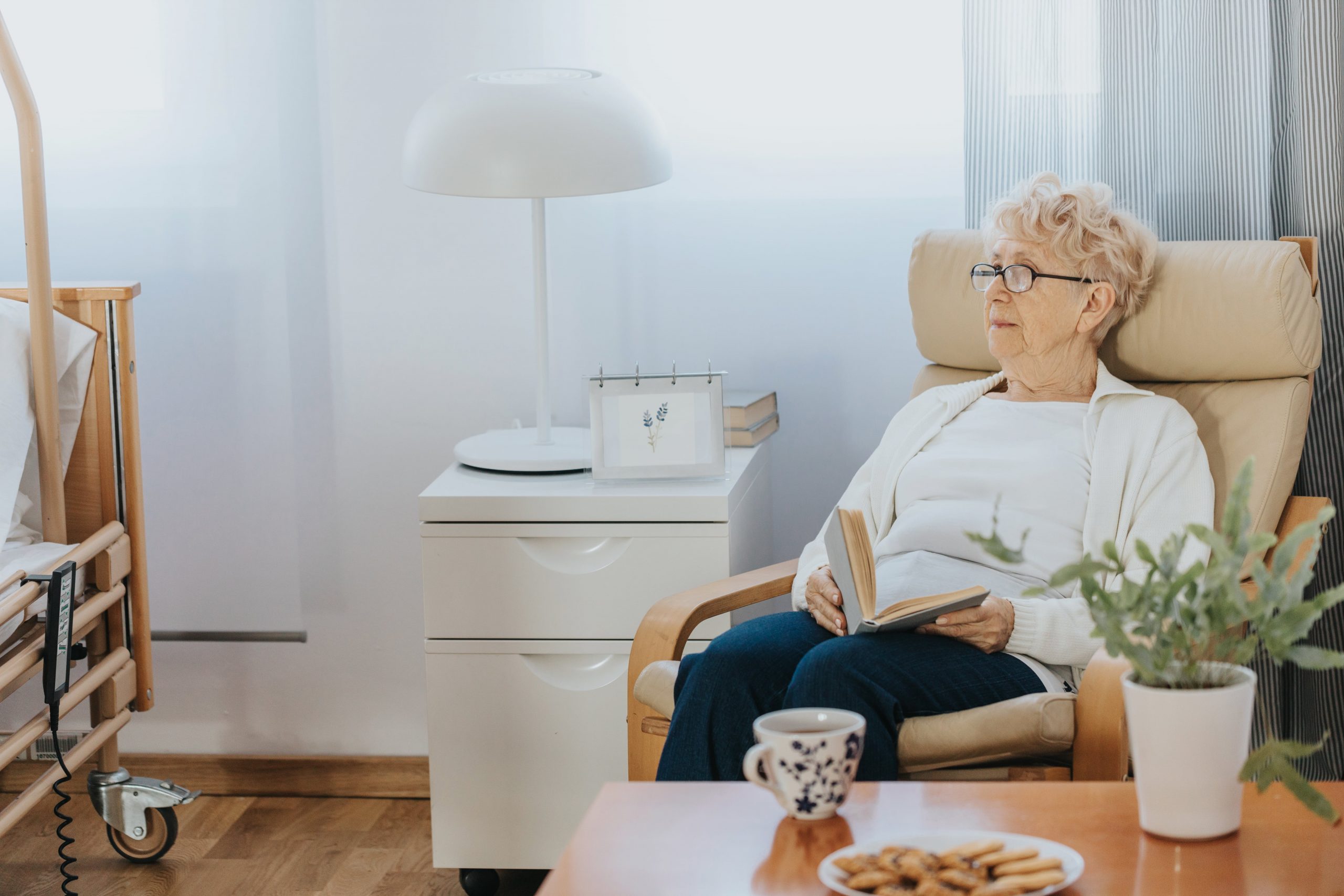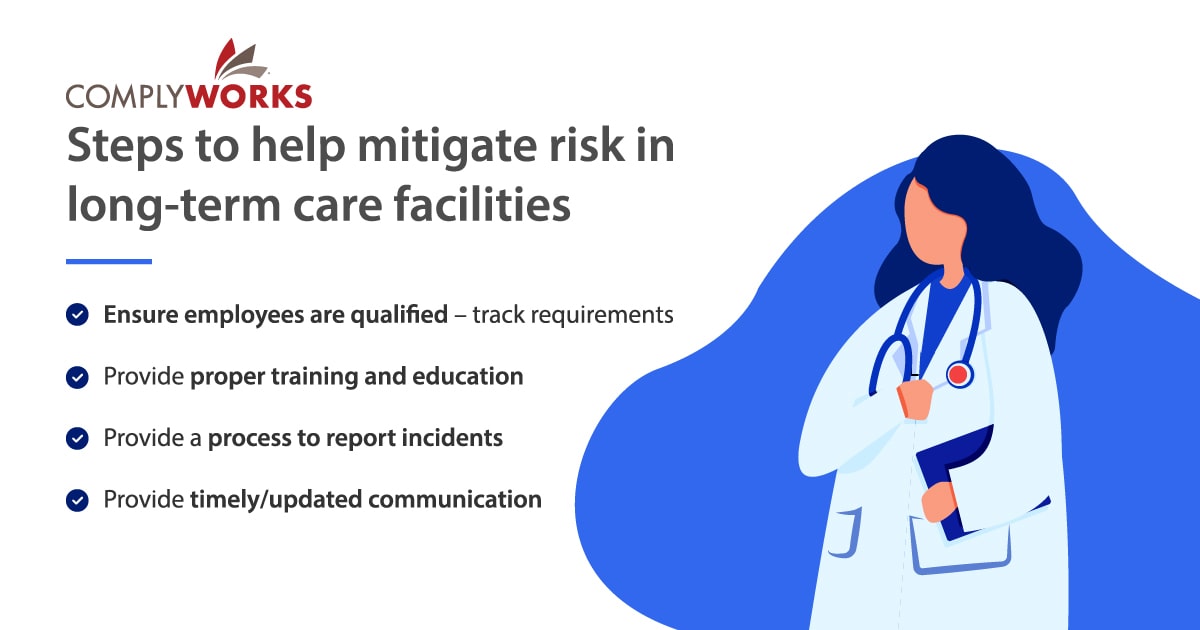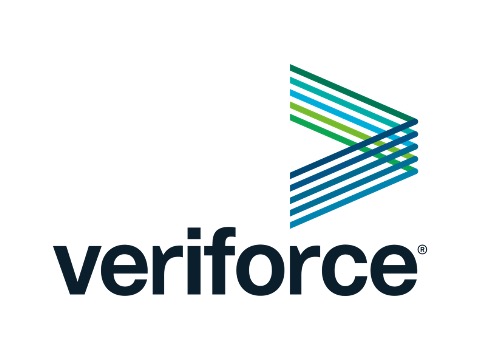Long-term care facilities, seniors’ residents, and nursing homes have experienced extreme challenges regarding the health, safety, and treatment of residents and caregivers worldwide, as COVID-19, takes the lives of our weakest and most vulnerable population.
Unfortunately, the challenges faced are not new to the system. COVID-19 has exposed the stark reality of the number of health and safety risks that are present behind closed doors. But, not all closed doors. The long-term care facilities that comply with the health and safety policies and procedures prove that best practices are keeping their residents and staff healthy and safe. So, let's uncover what the risk factors are in vulnerable homes and why.
Inside long-term care facilities
Long-term care homes provide a variety of services which help meet both the medical and non-medical needs of people with a chronic illness or disability, who cannot care for themselves for long periods. These services can be provided in a home, in the community, in assisted living facilities or nursing homes.
In long-term care homes, seniors need help with everyday activities, that include bathing, dressing, grooming, using the toilet, eating, moving around, and getting out of bed and into a chair.
A large and diverse workforce is required to take care of all residents’ needs, as well as the entire facility.

Care includes:
- nursing and personal care on a 24-hour basis
- access to health professionals, medical services and medical supplies (e.g., walkers and wheelchairs for occasional use)
- meals (including special diets) and daily activities
- housekeeping, bed linens and laundry
- social and recreational programs
When there are staff shortages, seniors suffer neglect and are at serious risk for their lives. There are additional risks for staff members too, including:
- violence
- occupational injuries
- slips, trips, and falls
Why are seniors so vulnerable?
Residents in long-term care homes often have compromised immune systems or are already dealing with health concerns. Managing infections such as elderly influenza and bacterial pneumonia are common. In fact, one-third of all deaths in seniors over 65 results from infectious diseases. Although seniors are more susceptible to infections overall, those with dementia or in long-term care are at greater risk. COVID-19 is proving how vulnerable this population is.

COVID-19 risk factors
Personal protective equipment (PPE)
The beginning of the COVID-19 outbreak posed a serious risk to employees, due to the lack of personal protective equipment such as face masks and gloves, thus leaving caregivers to fear for their safety at work. As a result, some workers quit their jobs, while others caught the virus and couldn’t work. Employers scrambled to quickly find and hire qualified staff to fill the necessary roles.
Due to low wages, the long-term care industry has always had issues finding staff. Therefore, forcing workers to work at more than one care home to make ends meet. If a worker has an infection, they can quickly spread it to others at all homes by simply touching hard surfaces or by sneezing or coughing.
Cleaning and sanitizing
COVID-19 has also exposed the noncompliance of cleaning protocols that should be in place within these facilities. Policy and procedure requirements were not followed, which has increased the spread of the virus.
Residents who live in care homes spend much of their time in common living areas, communal dining rooms, and shared bedrooms, so the chance for infection runs high for everyone. Many residents are sent to hospital emergency departments because of healthcare-associated infections and most are admitted for an extended length of time.
Simple cleaning and disinfection of surfaces may be one of the key defences in the battle against common infections and pandemic exposures like COVID-19.
Education and proper training are essential in a cleaning professional's role, especially for those who come from disadvantaged areas of our society to fill these low paid positions.
Workers in these roles are often not valued, and mentalities and attitudes towards these workers must change. They must be respected, trained, equipped, and financially compensated for the jobs they do. If the system remains broken - staff shortages and noncompliance will continue to be issues.
To help manage the risk of infection, facilities must have strict guidelines in place that meet the occupational health and safety standards (OHS), and employees must follow outlined cleaning protocols. These efforts have been lagging in some care homes because proper training is not available.
Cleaning staff must be:
- well-trained in cleaning all surfaces
- equipped with the proper tools to clean, sanitize and disinfect
- provided with enough time to do the necessary tasks
- educated about the prevention and transmission of disease
Finding solutions now is imperative to help mitigate the health and safety risks of our seniors and employees in these facilities in the future. Let’s not forget, the residents in these care homes are our mothers and fathers, our aunts and uncles, our sisters and brothers, and one day it might be us.
They are living and working in a broken system - lacking the critical care and resources necessary to ensure their health and safety. Managing risks in these facilities is crucial.

Long-term care projections
Reports indicate long-term care demands are only going to increase, and significantly over the next couple of decades as the large baby-boom generation nears retirement.
To put it in perspective, Canada will need an additional 199,000 long-term beds by 2035, nearly doubling current long-term capacity.
These beds will require approximately $64 billion in capital spending and $130 billion in operating spending between 2018 and 2035 (all figures in 2017 dollars).
In England, the Personal Social Services Research Unit (PSSRU) at the London School of Economics has developed a model to project long-term care demand and expenditure for older people under different scenarios.
The Government Actuary’s Department (GAD) projects that the number of people in England aged 65 and over will rise from 7.8 million in 1996 to 12.4 million in 2031, an increase of 60 percent.
The number of very elderly people (aged 85 and over) will rise even more rapidly, by 88 percent, from 0.9 million in 1996 to 1.7 million in 2031.
Based on these numbers, long-term care expenditure would need to rise by around 148 percent in real terms between 1996 and 2031 to meet demographic pressures. This would mean an overall increase in expenditure from around £9.8 billion in 1996 to £12.8 billion in 2010 and £24.3 billion in 2031.

Mitigate risk and save lives
When a crisis hits time is of the essence and communication is critical. ComplyWorks’ Communications Solution allows you to reach your employees and third parties quickly with custom bulletins to keep them informed of the situation and next steps helping mitigate risk - all from one touchpoint.
A work-related accident, injury, or illness can not only put an employee out of work and affect their quality of life, but it can also damage an organization’s productivity and reputation. And the cost to an organization can be substantial when in turn investing in compliance management from the start to keep employees safe would save you money.
Risk management doesn't have to be complicated or expensive. ComplyWorks’ automated compliance management platform allows you to effectively track, train, and communicate with your workforce anywhere – anytime.






